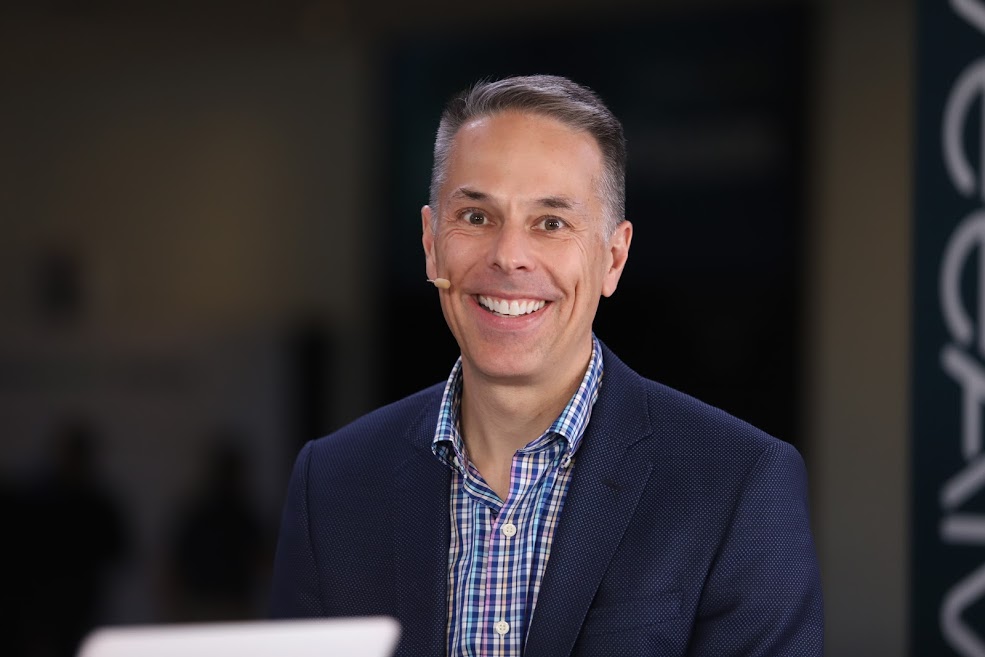 INFRA
INFRA
 INFRA
INFRA
 INFRA
INFRA
Storing data in the cloud is a challenge if you don’t have the right tools. In the case of Microsoft, the software company is looking at potentially new models of data storage to lower costs for customers and ensure all stored data remains safe over an indefinite period.
Tad Brockway (pictured), corporate vice president for Azure storage, media and edits at Microsoft, spoke with Dave Vellante (@dvellante) and Peter Burris (@plburris), co-hosts of theCUBE, SiliconANGLE Media’s mobile livestreaming studio, during the VeeamON event in Miami Beach, Florida. They discussed how Azure stores data and customer information, how the company is working to bring the costs of data storage down to zero, and what the Microsoft cloud model could look like in the future (see the full interview with transcript here). (* Disclosure below.)
[Editor’s note: The following answers have been condensed for clarity.]
Vellante: How would you summarize the Azure storage strategy?
Brockway: There are customers who are developing brand new, cloud-based apps. Maybe they’ll go straight to object storage. There are many customers that have data sets and workloads on-prem that are NFS-based and SMB-based. They can bring those assets to our cloud as well. We also have the only vendor in the industry that has a server-side implementation of HDFS, so for analytics workloads, we bring file system semantics for those large-scale HDFS workloads.
We bring them into our storage environment so that the customer can do all the things that are possible with the file system. Create hierarchies for organizing their data … and that’s a revolutionary thing that we’ve done. Optionality is key to being able to do all those things for all those different access types, and then being able to do that for multiple economic tiers as well.
Vellante: You talked about driving marginal costs of storing data down to zero. You’ve got some cool projects to reduce the costs of storing a bit. Talk about some of those projects.
Brockway: What we want is for our customers to be able to keep their artifacts in our cloud platform for thousands of years, and if you think about it, sort of the history of humanity, that’s not outside the question at all. In fact, wouldn’t it be great to have everything that was ever generated by humankind for the thousands of years of modern or human history? We’ll be able to do that with technology that we’re developing.
So, we’re investing in technology to store data indefinitely on glass, as well as in DNA. By investing in those advanced types of storage, that’s going to allow us to drive marginal costs down to zero over time.
Burris: We think you’re going to have a federated model for data protection that provides for local, autonomous data protection activities that are consistent with the needs of local data assets but under a common policy-based framework that the company team’s going to be able to provide. What do you think about this?
Brockway: A core principle of ours is that while we’re creating these platforms for large data sets to move into Azure, the most important thing is that customers own their own data. So, there’s this balance that must be reached in terms of cloud scale and the federated nature of cloud and these common platforms and ways of approaching data, while simultaneously making sure that customers and users take charge of their own data assets.
So, those are the principles that we’ll use to guide our innovation moving forward. I think we’re going to see a lot of innovation when it comes to taking advantage of clouds. I think the future’s bright in that regard.
Vellante: What are some of the gaps that the industry and Microsoft specifically must fill to make that sort of federated view a reality?
Brockway: We’re just at the early stages of all this. The notion of hybrid, which started out with use cases like backup, is rapidly evolving toward a more modern, enduring view. I think that in many ways, hybrid was viewed as this sort of temporary stop along a path to cloud, but what we’re seeing is the emergency of edge as being an enduring location for compute and for data, and that’s where the concept of intelligent edge comes in.
So, hybrid is about extending on-prem data center assets into the cloud, whereas intelligent edge is about taking cloud concepts and bringing them back to the edge in an enduring way. So it’s neat stuff.
Watch the complete video interview below, and be sure to check out more of SiliconANGLE’s and theCUBE’s coverage of the VeeamON event. (* Disclosure: Veeam Software Inc. and Microsoft sponsored this segment of theCUBE. Veeam, Microsoft or other sponsors do not have editorial control over content on theCUBE or SiliconANGLE.)
Support our mission to keep content open and free by engaging with theCUBE community. Join theCUBE’s Alumni Trust Network, where technology leaders connect, share intelligence and create opportunities.
Founded by tech visionaries John Furrier and Dave Vellante, SiliconANGLE Media has built a dynamic ecosystem of industry-leading digital media brands that reach 15+ million elite tech professionals. Our new proprietary theCUBE AI Video Cloud is breaking ground in audience interaction, leveraging theCUBEai.com neural network to help technology companies make data-driven decisions and stay at the forefront of industry conversations.